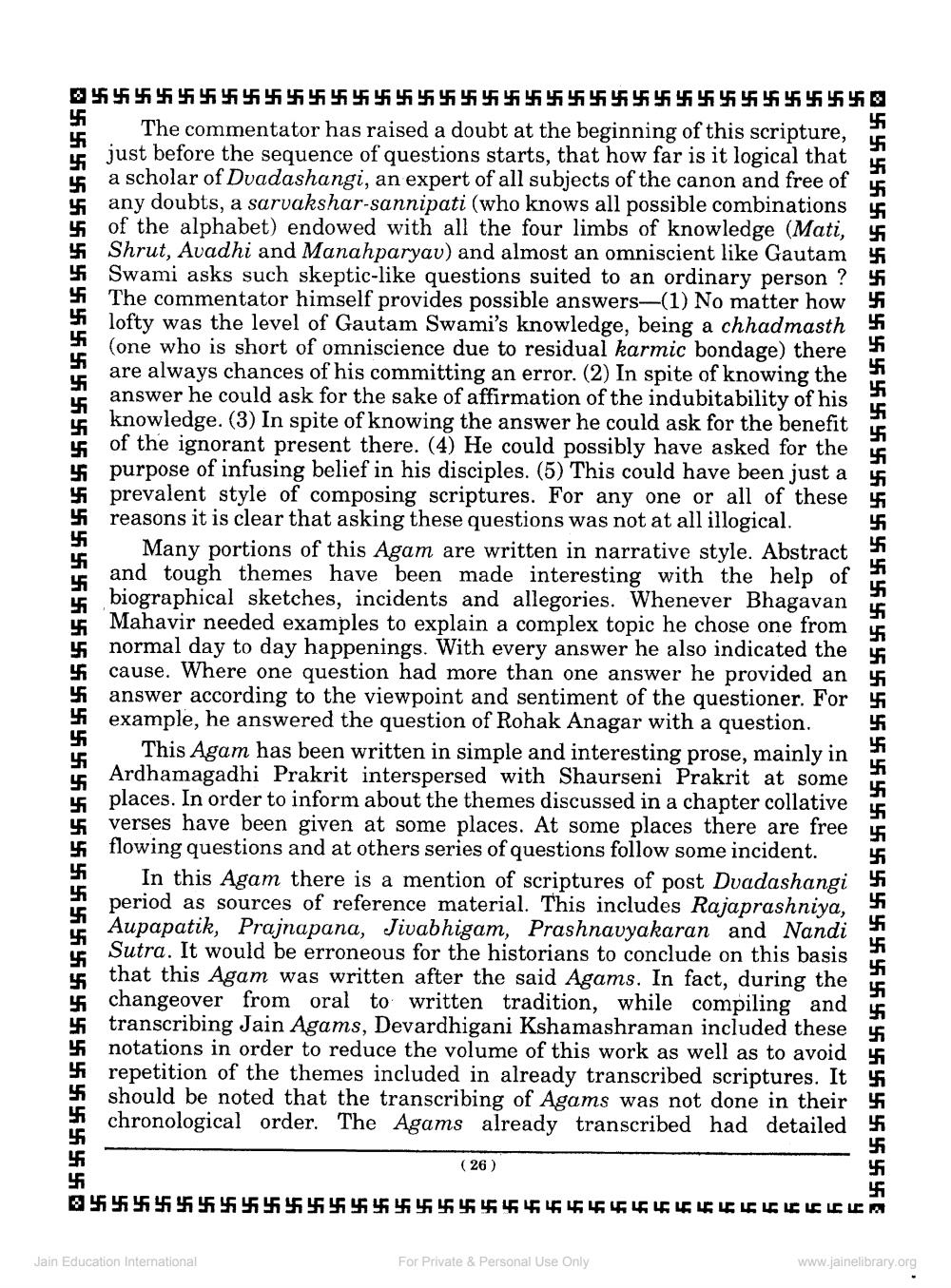________________
44 45 46 47 48
4 5454545454545454 455 456 457
4445454545454545454545454545454545454545454545454545454540
The commentator has raised a doubt at the beginning of this scripture, just before the sequence of questions starts, that how far is it logical that a scholar of Dvadashangi, an expert of all subjects of the canon and free of any doubts, a sarvakshar-sannipati (who knows all possible combinations of the alphabet) endowed with all the four limbs of knowledge (Mati, Shrut, Avadhi and Manahparyav) and almost an omniscient like Gautam Swami asks such skeptic-like questions suited to an ordinary person ? The commentator himself provides possible answers—(1) No matter how lofty was the level of Gautam Swami's knowledge, being a chhadmasth $ (one who is short of omniscience due to residual karmic bondage) there are always chances of his committing an error. (2) In spite of knowing the answer he could ask for the sake of affirmation of the indubitability of his knowledge. (3) In spite of knowing the answer he could ask for the benefit of the ignorant present there. (4) He could possibly have asked for the purpose of infusing belief in his disciples. (5) This could have been just a prevalent style of composing scriptures. For any one or all of these reasons it is clear that asking these questions was not at all illogical.
Many portions of this Agam are written in narrative style. Abstract and tough themes have been made interesting with the help of biographical sketches, incidents and allegories. Whenever Bhagavan Mahavir needed examples to explain a complex topic he chose one from normal day to day happenings. With every answer he also indicated the cause. Where one question had more than one answer he provided an answer according to the viewpoint and sentiment of the questioner. For example, he answered the question of Rohak Anagar with a question.
This Agam has been written in simple and interesting prose, mainly in Ardhamagadhi Prakrit interspersed with Shaurseni Prakrit at some places. In order to inform about the themes discussed in a chapter collative verses have been given at some places. At some places there are free 4 flowing questions and at others series of questions follow some incident.
In this Agam there is a mention of scriptures of post Dvadashangi period as sources of reference material. This includes Rajaprashniya, Aupapatik, Prajnapana, Jivabhigam, Prashnavyakaran and Nandi Sutra. It would be erroneous for the historians to conclude on this basis that this Agam was written after the said Agams. In fact, during the changeover from oral to written tradition, while compiling and transcribing Jain Agams, Devardhigani Kshamashraman included these notations in order to reduce the volume of this work as well as to avoid repetition of the themes included in already transcribed scriptures. It $ should be noted that the transcribing of Agams was not done in their 45 chronological order. The Agams already transcribed had detailed
46 45 44 45 46 455 456 457 454 455 456 457 454 455 456 457 458 454
46 45 44 45
454 455 454 455 456 457 454 455 456 45155454545454545454545454545
2454 455 456 457 44 45 46 45 44 45 46 45 44 45
( 26 )
日牙牙牙牙牙牙牙牙牙牙牙牙牙牙岁男%%%%%%%%%%%以上 LEEVEA
Jain Education International
For Private & Personal Use Only
www.jainelibrary.org




